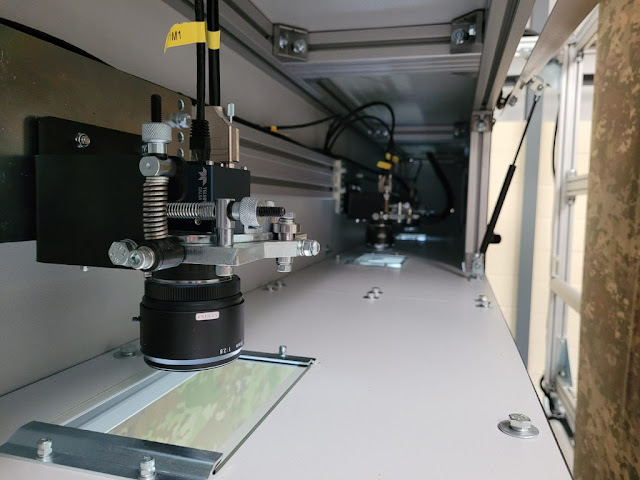Demystifying AI-Powered Fabric Defect Detection

Imagine a world where fabrics are born perfect, free from blemishes that mar their beauty and functionality. This vision is becoming increasingly tangible thanks to the transformative power of Artificial Intelligence (AI). AI-based fabric defect detection systems are revolutionizing the textile industry, ensuring exceptional quality and reducing waste at every step. Let's dive deep into the inner workings of these remarkable systems and unravel the magic behind their success.
Step 1: Data Acquisition - Capturing the Fabric's Story
The journey begins with capturing high-resolution images of the fabric as it rolls off the production line. These images act as the raw data that AI algorithms will analyze. Cameras with advanced lighting and sensor technology ensure consistent and detailed captures, regardless of fabric type or speed.
Step 2: Image Preprocessing - Preparing the Canvas for Analysis
Before feeding the images to the AI engine, they undergo preprocessing steps. This involves tasks like: Noise reduction: Filtering out unwanted elements like dust or shadows that might interfere with defect detection. Color normalization: Ensuring consistent color representation across different lighting conditions. Image segmentation: Isolating the fabric area from the background for focused analysis.
Step 3: Feature Extraction - Unveiling the Fabric's Secrets
Now comes the heart of the AI system - feature extraction. Powerful algorithms analyze the preprocessed images, extracting key features that distinguish defects from perfect fabric. These features can be: Texture: Roughness, smoothness, or presence of abnormal patterns. Color: Deviations from the expected color range, indicating stains or dye inconsistencies. Shape: Irregularities in the weave pattern, holes, or tears.
Step 4: Defect Classification - Identifying the Culprits
Armed with extracted features, the AI model classifies each pixel in the image as either "defect" or "non-defect." This classification happens through various techniques like:
Deep learning: Convolutional neural networks (CNNs) trained on massive datasets of labeled defect images learn to recognize subtle patterns associated with specific defects.
Support Vector Machines (SVMs): These algorithms create decision boundaries that separate defect and non-defect regions based on extracted features.
Step 5: Defect Localization and Reporting - Pinpointing the Flaws
Once classified, the system pinpoints the exact location and type of each defect. This information is typically overlaid on the original image, creating a visual representation of the fabric's imperfections. Additionally, detailed reports can be generated, providing valuable insights into the types and frequency of defects encountered.
The Benefits of AI-Powered Fabric Defect Detection:
- Enhanced Accuracy: AI systems surpass human inspectors in identifying subtle flaws, minimizing missed defects.
- Reduced Costs: Early detection of defects saves resources by preventing wasted materials and production downtime.
- Improved Quality: Consistent, high-quality fabrics lead to better customer satisfaction and brand reputation.
- Data-Driven Insights: The wealth of data collected helps identify root causes of defects, leading to process improvements.
The Future of Fabric Perfection:
The future of AI-powered fabric defect detection is bright. Continuously evolving algorithms and advancements in hardware will lead to:
- Real-time defect detection: Systems will identify flaws in real-time, enabling immediate corrective actions.
- Predictive maintenance: AI will analyze historical data to predict potential issues in machinery, preventing defects before they occur.
- Self-learning systems: AI models will continuously learn and adapt, improving their accuracy and defect detection capabilities over time.
Weaving a Sustainable Future:
By minimizing waste and ensuring top-quality fabrics, AI-powered defect detection systems contribute to a more sustainable textile industry. As these systems evolve, they have the potential to revolutionize the entire production process, making it not only efficient but also environmentally conscious.
Innovate with Kamlatech